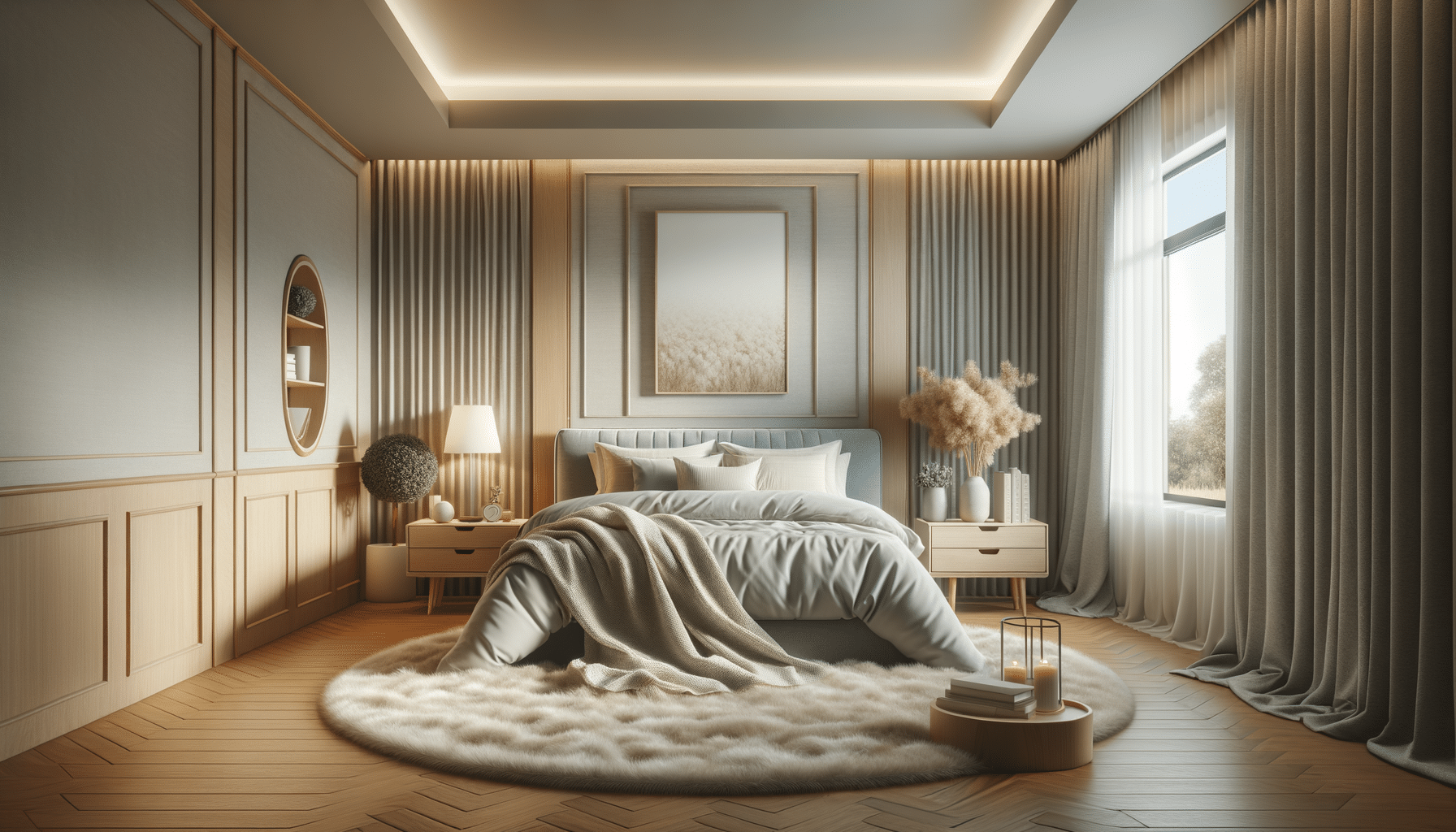
Bedroom design creates a serene atmosphere
Introduction to Bedroom Design
The bedroom is more than just a place to sleep; it is a sanctuary where we retreat after a long day, seeking comfort and relaxation. A well-designed bedroom can significantly enhance our quality of life by promoting better sleep and reducing stress. This article explores the key elements of bedroom design, from furniture layout to lighting, and how they contribute to creating a serene atmosphere. Whether you’re looking to revamp your current space or design a new one from scratch, understanding these principles can help you create a bedroom that meets your needs and preferences.
The Importance of Furniture Layout
One of the foundational aspects of bedroom design is the layout of furniture. The arrangement of your bed, nightstands, and other furnishings can influence both the functionality and aesthetics of the space. A thoughtful layout not only maximizes available space but also ensures a smooth flow of movement, which is essential for comfort and convenience.
Consider the following tips when planning your furniture layout:
- Position the bed as the focal point, typically against the longest wall.
- Ensure there’s enough space on either side of the bed for nightstands.
- Maintain clear pathways for easy movement, avoiding clutter.
- Utilize multi-functional furniture, like storage beds or ottomans, to optimize space.
By strategically arranging furniture, you can create a balanced environment that feels spacious and inviting.
Lighting: Setting the Mood
Lighting plays a crucial role in bedroom design, impacting not just visibility but also mood and ambiance. The right lighting can transform a bedroom from a functional space into a cozy retreat. Consider layering different types of lighting to achieve the desired effect:
- Ambient lighting provides overall illumination, often achieved with ceiling fixtures or recessed lights.
- Task lighting, such as bedside lamps, offers focused light for activities like reading.
- Accent lighting highlights specific features, adding depth and interest to the room.
Dimmer switches can be a valuable addition, allowing you to adjust the brightness according to your needs and preferences. By carefully selecting and positioning lighting fixtures, you can create a warm and inviting atmosphere that promotes relaxation.
Color Schemes and Textures
The choice of colors and textures is another essential aspect of bedroom design. Colors can evoke emotions and influence our mood, making it important to select hues that promote relaxation. Soft, neutral tones like beige, gray, and pastels are popular choices for creating a calm environment.
Incorporating different textures through bedding, rugs, and curtains can add depth and interest to the space. Consider the following tips:
- Use a mix of materials, such as cotton, wool, and velvet, for a cozy feel.
- Incorporate natural elements like wood or stone to add warmth and character.
- Balance bold patterns with solid colors to avoid overwhelming the space.
By thoughtfully selecting colors and textures, you can create a harmonious and inviting bedroom that reflects your personal style.
Personal Touches and Decor
Personal touches and decor are what truly make a bedroom feel like your own. While functionality and aesthetics are important, infusing the space with elements that reflect your personality can enhance its appeal and comfort. Consider adding personal touches such as:
- Artwork or photographs that hold sentimental value.
- Decorative pillows or throws in your favorite colors.
- Plants or flowers to bring a touch of nature indoors.
- Aromatherapy diffusers or candles for a soothing scent.
These elements not only add visual interest but also create a sense of familiarity and comfort. By incorporating personal touches, you can transform your bedroom into a space that feels uniquely yours.
Conclusion: Crafting Your Serene Bedroom
Designing a bedroom that fosters relaxation and comfort involves a careful consideration of various elements, from furniture layout to lighting and decor. By understanding and applying these principles, you can create a space that not only meets your functional needs but also serves as a personal sanctuary. Remember, the key to a successful bedroom design lies in balancing aesthetics with practicality, ensuring that every element contributes to a cohesive and inviting atmosphere. Whether you’re starting from scratch or making small changes, these insights can guide you in crafting a serene bedroom that enhances your well-being.


